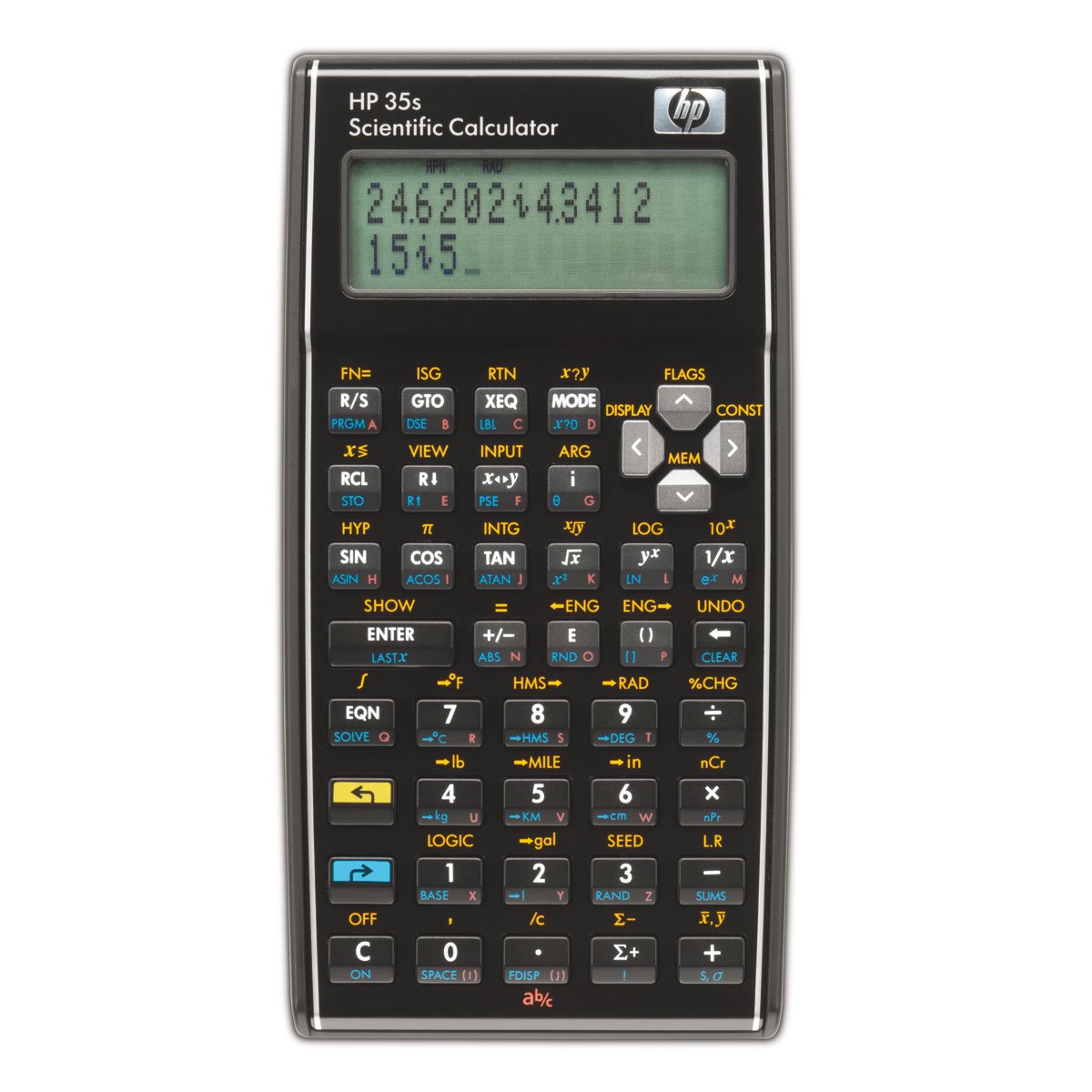

In short: If you are in school, or if you need to do a bit more than common math, spend a few dollars, get a quality calculator. My other HP calculator, which sits at home, is a 20-year-old HP32s and I only recently replaced it with a newer 35s for no other reason than I wanted to see what the new calculators looked like. I think I've changed the batteries three times in all those years. My first HP11c is now approaching 30 years old, and I still use it several times a week. I believe all of the scientific calculators are programmable (you can write your own functions, automating common tasks). When HP has made some cheaper models, with cheaper keyboards (the 33s, for example), users revolted. People who use HP calculators rave about the keyboard - it is unlike any other calculator. The buttons "feel" substantial with a solid, satisfying 'click' when typed. This same calculator, with the same features, has been produced since then. HP reviewed this calculator a few years ago and decided, even after 30 years of production, nothing needed changed. This is an Industry Standard calculator for all financial users. HPG8X92AA (graphic) I will be buying this calculator next (update: now bought, but not reviewed): If you can, buy the 35s it has a better keyboard. HP33s ($40.00) low-end calculator - chicklet keyboard Otherwise, choose the Scientific calculators (even if you are not a scientist). HP divides the world into two types: Financial and Scientific.īankers, investments, and real estate, choose a Financial calculator (12c). HP makes both Algebraic (press "Equals) and RPN calculators (press "Enter") - be sure to pick the right model.I have used HP's RPN for so many years I can no longer use a "standard" calculator and I am embarrassed when forced to - I can only solve the simplest equations on those types of calculators - Algebraic calculators now seem completely foreign. The keystrokes are counter-intuitive, but after practicing for ten minutes, you will never forget and will never want to go back! Once the second section is completed, press "+", adding the two blocks together.Īt each stage, intermediate results are displayed. Without pressing other keys, begin the second part of the equation by typing:Ħ (Enter *Technically, this ENTER is not required because the SQRT resolved)Ĭompleting this part the same as the first. The calculator shows the intermediate result: 6.708 The calculator shows the intermediate result: 9


The calculator shows the intermediate result: 5Ĥ (Enter, separates this from the above "5" *) Using the first example, the keystrokes would be this:Ģ (Enter, separates this first number from the second) The most horrendous function can be typed and never is a parenthesis or intermediate save needed. Type the second number.Īfter the two numbers are typed, press the function (add, subtract, etc.). With RPN, type the first number, then press ENTER. RPN keystrokes are different than an algebraic calculator. These are the same rules learned in 3rd-grade. The gist is this: Enter the formulas in the same way as-if solving with paper and pencil solving from left-to-right, inner-parenthesis first, using "My Dear Aunt Sally" (multiplication and division before addition and subtraction). RPN calculators show intermediate results and there are no parenthesis, nor do you need to store values in "M" (memory) - the calculator handles this for you. and when multiplied together (2+3) x (4+5), "45" appears in mid-formula. As "2+3" is typed, the calculator would show "5" You would have a high degree of confidence, knowing each intermediate step was reasonable - with results displayed as the formulas were being typed.įor example, on the HP, you would see the following: With an HP (RPN) calculator, you would get the correct answer the first time. My daughter, with her expensive TI calculator, tried these formulas several times, and was not confident in her results. Did you type a boat-load of parenthesis?.Did you have to save values into Memory (M1), (M2)?.Were you confident, as you entered the numbers, that you were on the right track or did you have to wait for the final equal-sign before you were done?.Did you write down intermediate answers?.Did you get the right answer the first time?.Using your current calculator, compute the result: (Illustration: My new calculator and my daughter's statistics text book)Ĭonsider this formula.


 0 kommentar(er)
0 kommentar(er)
